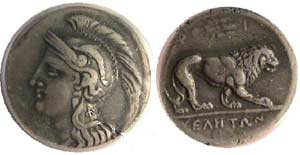1947
KING GEORGE VI (with square border)
Even before independence, the question of introducing Pakistan postage stamps on the day of establishment of Pakistan (14th August1947) was examined. Due to complications accompanying the designing and printing of new postage stamps and the limited period then available, it was decided that the postage stamps and postal stationery to be used by the Government of Pakistan should, in the first instance, be distinguished by over-printing Indian postage stamps and stationery with the word Pakistan. They were over–printed by government presses in Pakistan .The over-printed Indian postage stamps became very popular with the philatelists all over the world .Rubber–stamping or hand printing was never allowed; postage stamps bearing rubber over prints are, therefore unauthorized .
1948
INDEPENDENCE COMMEMORATIVES
The first series of postage stamps, issued Pakistan, were devoted to the commemoration of independence. They were released on the 9th July 1948 and comprise four values. The Independence commemoratives were withdrawn from sale with effect from 1st October 1959.
1949
1ST ANNIVERSARY OF THE DEATH OF QUAID-E-AZAM COMMEMORATIVE
On the death anniversary (11th September 1949) of the Quaid-e-Azam, a set of three postage stamps of 1½-anna, 3-anna and 10-anna denominations were issued commemorating the sad demise of the Father of the Nation. These stamps , true to the Islamictraditions, do not bear a portrait of the Quaid-e-Azam. They are floral in design and bear the name of the Quaid-e-Azam; the dates of his birth and death and his memorable maxim: “Faith, Discipline, Unity.” These stamps were withdrawn from sale with effect from the 1st April,1950, bur still remain valid for payment of postage.
1951
4th ANNIVERSARY ISSUES-ARCHES
A new set of eight postage stamps was issued on the 14th August 1951, the fourth anniversary of the establishment of Pakistan.These stamps were designed by the famous Pakistani artist, K.B. Abdur Rehman Chugtai. Their colour scheme was chosen y the Ministry of Communications and the printing was done in one colour by Messrs. Thomas De La Rue & Co. Ltd., London , by direct plate process.
These postage stamps are of denominations of 2½-anna, 3-anna, 3½-anna, 4-anna, 6-anna, 8-anna ,10-anna and 12 –anna. The size is 19x33.5 millimeters and the perforation gauge 12x13½ ( c ).Four designs have been used in these stamps, one design for two different denominations, which are distinguished by different colours.
Service postage stamps of 3-anna, 4-anna and 8-anna denominations were also issued, In this issue the word "Service" hi!" not been overprinted as is the case with other Pakistan service postage stamps; it is actually incorporated in the stamp design.
1952
SCINDE DAWK
On the 14th August 1952, two stamps of the 3-anna and the 12-anna denominations and an attractive First Day Cover were issued to celebrate the 100th anniversary of the Scinde District Dawk stamps, the first stamps issued in Asia in July 1852. The design illustrates the original stamp with a string of camels and airplane added to symbolize progress in mail transport. The 3-anna stamp is chartreuse in colour, and the 12-anna stamp is light brown. These stamps were withdrawn from sale on 1st November 1953.















